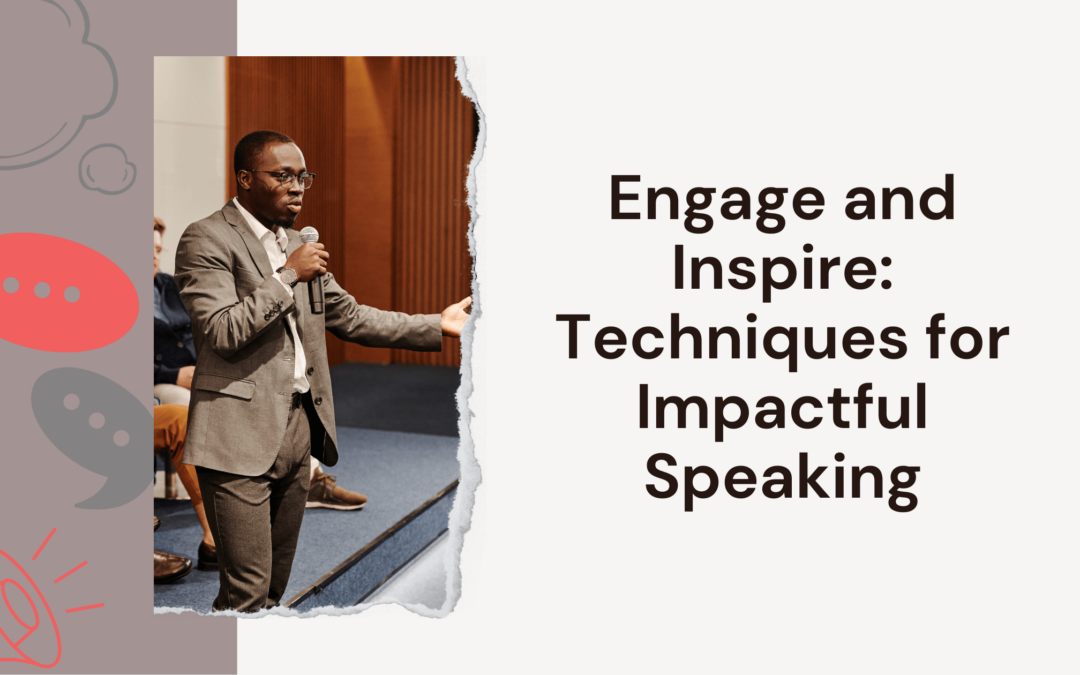
Engage and Inspire: Techniques for Impactful Speaking
A captivated audience is interested and engaged. They’re happy to be there, and maybe even excited about the experience. The following tips can help you become a captivating speaker who mesmerizes your audience and keeps them coming for more.
Ask Questions
One great way to generate engagement is to ask questions. People love sharing their opinions. Ask them what they think, and when they respond, praise them for their input. Saying something like, “That’s a great question,” builds rapport and keeps the audience involved. Asking questions also helps direct their interest to specific topics.
Compliment Your Audience
Compliments go a long way in making your audience feel appreciated. Simple phrases like:
– “Thank you for bringing that up, Susan.”
– “That’s a great question, Bill. I’m glad you asked it.”
– “You must be a mind reader. That’s exactly what I was going to address next.”
Make your audience feel good about the experience you offer. Whether you’re complimenting their insights or their attire when meeting them beforehand, positive reinforcement keeps people interested in what you have to say.
Announce an Unadvertised Bonus for Sticking Around
At the beginning of your speech, express genuine gratitude for everyone attending and mention a special, unadvertised bonus for those who stay until the end. Make this bonus relevant to your topic. This surprise element keeps your audience curious and engaged throughout your presentation.
Paint a Picture with Powerful Emotions
The best speakers create an emotional connection with their audience. Instead of just listing facts, focus on how those facts translate into positive experiences. Use vivid, emotional language to paint a picture. Tell stories that evoke feelings and make your points more relatable. The more emotions you can stir, the more captivated your audience will be.
Use Body Language Effectively
Non-verbal communication is just as important as what you say. Use open, confident body language to establish credibility and connect with your audience. Make eye contact, use hand gestures to emphasize points, and move around the stage to engage different parts of the audience. This helps to keep people’s attention and makes your message more compelling.
Vary Your Vocal Tone
Monotone speaking can quickly lose an audience’s interest. Vary your vocal tone to emphasize key points, show excitement, and convey emotions. Changing your pitch, speed, and volume can make your speech more dynamic and keep listeners engaged.
Practice Active Listening
During Q&A sessions or interactive parts of your presentation, practice active listening. Show that you are fully engaged with what your audience members are saying. Nod, make affirming sounds, and respond thoughtfully. This demonstrates respect and appreciation for their input, fostering a stronger connection.
Include Visual Aids
Visual aids like slides, videos, or props can enhance your presentation and keep the audience engaged. Ensure they are relevant and add value to what you are saying. Visuals can help illustrate points, break up the monotony of speaking, and cater to visual learners in your audience.
Encourage Interaction
Encourage your audience to participate through small group discussions, polls, or interactive activities. Interaction keeps people engaged and feeling like they are part of the presentation, rather than passive listeners.
Tell Personal Stories
Sharing personal stories can make your presentation more relatable and memorable. People connect with stories on an emotional level, and a well-told personal anecdote can powerfully illustrate your points.
Captivating speakers aren’t born; they’re made. By practicing these tips, you can become an enthralling speaker who holds your audience’s attention from start to finish.
